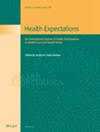Co-Design of a Framework for Person-Centred Care at Emergency Department Triage and Waiting Room
Abstract
Introduction
Patients presenting to an emergency department (ED) are typically assessed by a triage nurse and often required to wait for further assessment and care. Ongoing issues of ED overcrowding and prolonged wait times can impact the processes and patients' experiences. A person-centred approach is recommended. This study aimed to develop a person-centred care framework for use in the ED triage and waiting room.
Methods
The multi-phase research involved a synergistic partnership-based fully integrated mixed-methods approach based on person-centred care principles. Framework development followed target population-centred and partnership-based processes of conception, planning and designing. A consumer group was actively involved throughout. Data collection involved two literature reviews, a patient survey and triage nurse survey. Findings were synthesised through focus group sessions and the framework was developed during a collaborative workshop.
Results
A total of 225 patients and 176 triage nurses responded to the respective surveys. Patients reported the need for better communication, efficiencies and comfort in the waiting room. Nurses identified barriers to person-centred care, such as workloads, poor environment and long wait times. Strategies for overcoming barriers included enhanced communication, addition of waiting room staff and family involvement. Focus groups recommendations were synthesised as support for staff, systems and processes, environment and facilities, communication and information, and individual care needs, forming the framework elements/components. Practical micro, meso and macro level interventions were also recommended.
Conclusions
The newly developed framework can now be applied to ED triage settings and inform person-centred interventions.


 求助内容:
求助内容: 应助结果提醒方式:
应助结果提醒方式:


